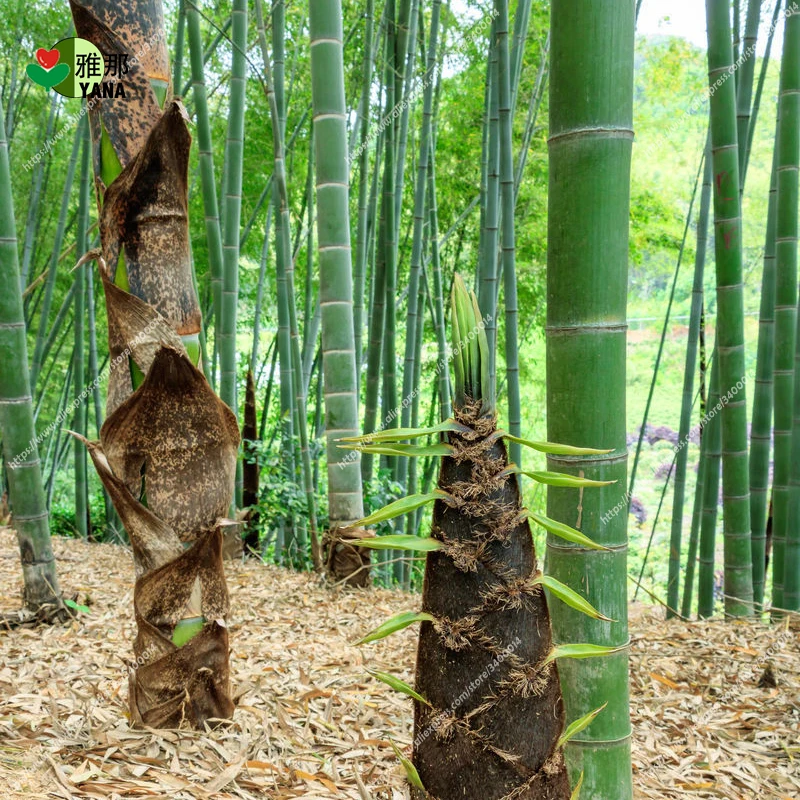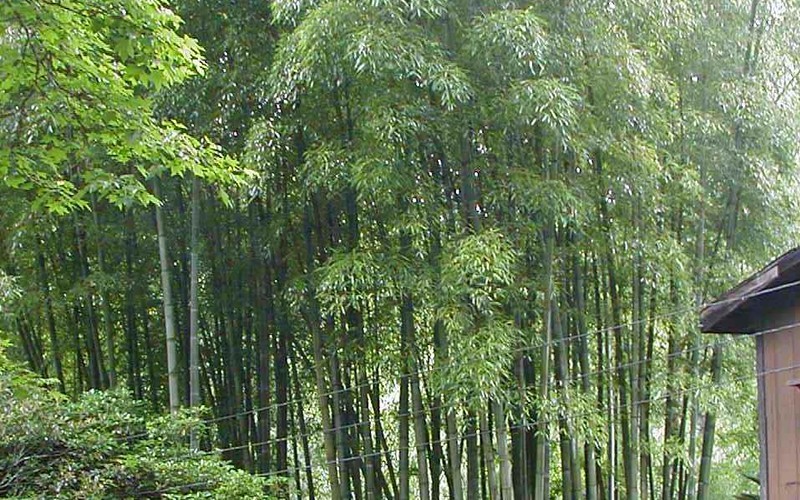

Genus name comes from the Greek word pyllon meaning leaf and stachys meaning ear of corn or spike in reference to the leafy inflorescence. Shoots harvested for food are best collected before they break the soil surface, but in reality are more commonly collected after emerging from the ground but before reaching 12” tall. It is also the most commonly grown species of bamboo in Asia for harvest of its edible shoots which are eaten locally and/or canned for export. The leaves of the Moso bamboo are cold hardy even below freezing temperatures with snow and. It is grown in large plantations and harvested for a variety of products including timber, fencing, furniture, construction material, paper, plywood, flooring, musical instruments and fishing poles. The Moso Bamboo Tree has the ability to grow underneath other trees. Moso bamboo is the most commonly grown bamboo species in China and Japan for commercial purposes. Although bamboo plants in general normally expend so much energy in the flowering/fruiting that they die shortly thereafter, this rule of thumb is not always true in regard to this species. Insignificant white flowers rarely appear (about once every 67 years). Culm thickness ranges from 3 to 8” in diameter. Culms are velvety gray when young becoming green or yellow with age with a white bloom below the nodes. Culms are columnar, only tapering near the apex where the uppermost nodes produce attractive side branches that in turn bear the numerous elegant, paper-thin, narrow-lanceolate leaves (to 5” long and 5/ 8” wide). Nodes on the culms form a segmented stem that is hollow except at the node itself. Woody culms (stems) have nodes at intervals. It grows well in parts of the southeastern U.S. It is native to deciduous woodlands in China, but has been introduced elsewhere around the globe including Japan where it has become an important symbol of prosperity in Japanese culture. Although mature specimens look like trees, moso bamboo is not a tree but is in fact a grass with a woody structure.


It is the largest and perhaps the most ornamentally attractive of the temperate bamboos. Phyllostachys edulis, commonly known as moso bamboo, tortoise-shell bamboo or edible bamboo, is a rhizomatous species of timber bamboo that will grow in favorable conditions to 25-60’ tall, but less frequently to as much as 90’ tall. Rhizomatous spread combined with speedy upright growth (to 3’ per day at its peak) enable it to take over and dominate large areas (forms dense monocultural thickets) because it simply outpaces the growth of other plants, shrubs and trees. Where winter hardiness is not a problem, moso bamboo can spread aggressively by rhizomes to the point of being somewhat invasive. In cold winter areas north of USDA Zone 6, plants may be grown in patio containers that are brought indoors for overwintering in a greenhouse, sunroom or sunny window. Best growth typically occurs in USDA Zones 8-9, but plants may survive in Zones 6b and 7 in a less vigorous much shorter form. Plants will tolerate some frost, but will be seriously damaged if temperatures dip below 14 degrees F. In the U.S., ideal growth occurs in warm climates with hot summers and cool to moderately cold winters. Prefers a moist sheltered site in dappled shade.
BAMBOO MOSO FULL
They can also be used in many other different types of applications such as window frames, doors, facade shades, and stairs.Grow in fertile, humus-rich, moist but well-drained soils in full sun to part shade. MOSO® bamboo beams in X-treme and N-finity versions can handle many types of furniture applications, as well as wall and ceiling treatments. Various applications can be handled with these products and different looks can be achieved to help the space reach its potential. MOSO® bamboo panel and veneer products have been applied by architects in large hotel chains like Citizen M, shopping malls like City Life in Milan, Italy, and many public buildings. Our Bamboo Solida flooring line provides a quick-click system with strength, durability, and beauty in one package and a wide variety of bamboo and wood looks in different colors. Bamboo UltraDensity® is installed in the most intensively used train stations in Europe. Floors such as our Bamboo Industriale are used in car plants on production area floors, demonstrating their durability and strength. MOSO® Bamboo flooring products range from residential to light and heavy commercial applications. These products outperform the best tropical woods while providing unmatched durability, Class A fire rating, and an amazing end-matched connection system enabling reduced waste and ease of installation. Our Bamboo X-treme® outdoor products bring a unique visual with exceptional stability in an ecologically sustainable product group. Since 1997, MOSO® has a long history of providing sustainable, innovative, and high-quality bamboo products to the building, architectural, and design communities to help fulfill their design vision.


 0 kommentar(er)
0 kommentar(er)
